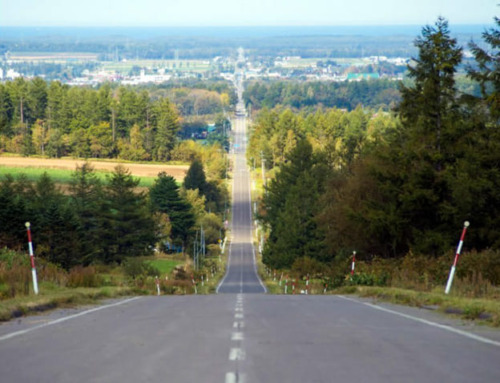Spectacular Nature – Tohoku Self Drive
10 nights | 11 days
The Tohoku region of Japan is home to unspoiled rural landscapes and historical treasures, outdoor summer adventures and endless powder snow in the winter
Japan’s northeastern wilderness is a huge region encompassing six rural prefectures, bound together by custom and heritage.
Dramatic landscapes, history-rich sites, craft sake and a host of outdoor activities like rafting, hiking and skiing.
Much more rural than Tokyo yet more developed than Hokkaido, the Tohoku region makes for exciting excursions from the capital and memorable side trips on the journey to the northernmost region of Japan’s main island.
Spectacular Nature - Tohoku Self Drive

Day 1: Transfer to Fukushima & Drive to Aizu Wakamatsu
Start driving from Fukushima Prefecture. Take a bullet train from Tokyo to Fukushima and hire a car near the station. Today’s destination, Aizu Wakamatsu City is one of the most popular historical regions in Tohoku. We’ll go on sightseeing in this area tomorrow.
Accommodation in Aizu Wakamatsu
Day 2: Aizu Wakamatsu and Ouchijuku
Morning travels around the town of Samurai. Aizu Wakamatsu Castle (Tsurugajo Castle) is known for its beautiful appearance and its long history of over 600 years. In spring, many people visit this castle, which is admired as one of the top cherry blossom viewing spots.
Near Aizu Wakamatsu, there is a beautiful lake and a mountain called Lake Inawashiro and Mt. Bandai. Inawashiro is known as a lake where swans visit from Siberia to pass the winter.
In the afternoon, we’ll drive south to Ouchijuku, a post town in Edo period. Historical townscape still remains with the thatch-roofed houses built in that era used as restaurants or craft shops. Step back 400 years ago.
Accommodation in Aizu Wakamatsu
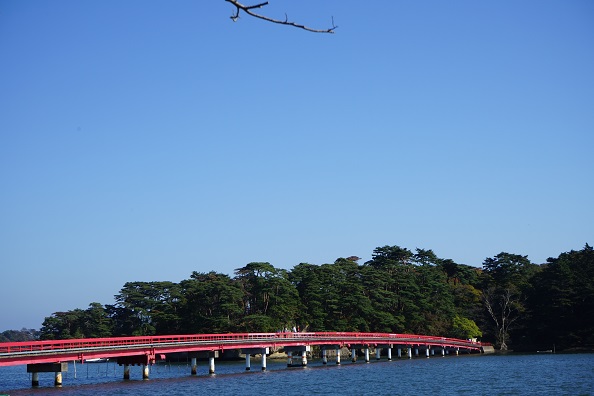
Day 3: Matsushima & Sendai
Morning travels to Miyagi prefecture and Matsushima. Matsushima, the stunning bay area with a unique landscape would be perfect for a driving trip. 260 islands and wave-cut rocks will show you dynamic scenery. The view of Matsushima is known as one of the three greatest views in Japan. The top master of haiku poetry in Edo period, Basho Matsuo, made a trip to Tohoku seeking to visit Matsushima. However, he didn’t make any haiku describing the scenery of Matsushima. It is said that’s because Matsushima was so spectacular that he didn’t even have words to express the beauty, while he had made tons of haiku poems about Japan’s sceneries.
Afterwards we’ll go around Sendai, the base of the Sendai government in Edo period. Sendai Castle was built by Masamune Date (a.k.a. the one-eyed dragon), one of the most admired samurai among history fans. There’s also a mausoleum of him in Sendai.
Accommodation in Sendai
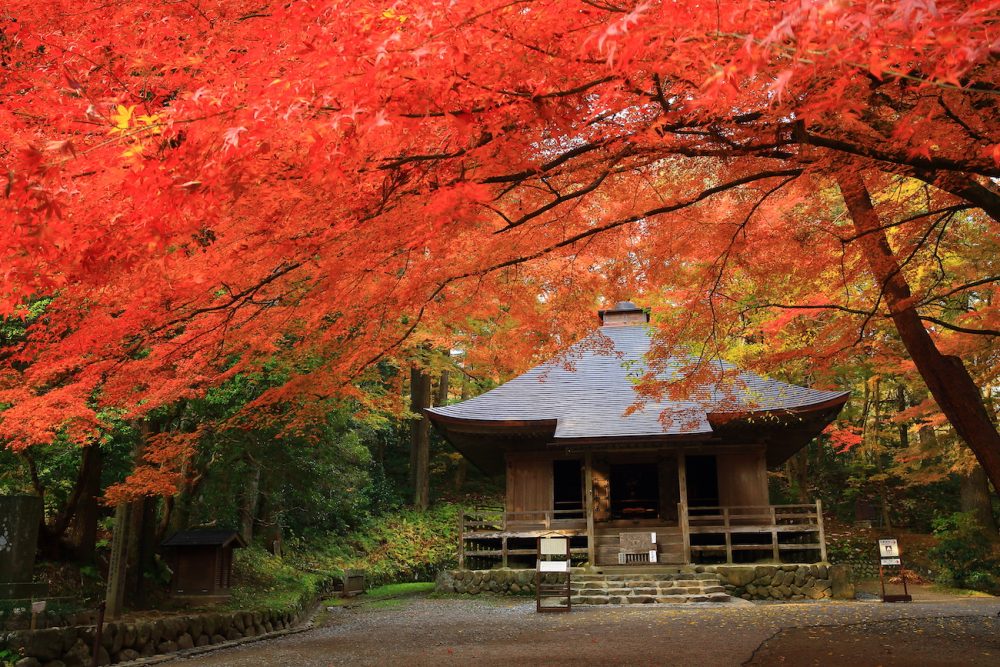
Day 4: Hiraizumi & Morioka
Approximately one hour drive will take you to another historical town having a Buddhist aspect. Amongst the attractions in Hiraizumi, must-see would be Chusoji and Motsuji. You may have seen a golden pavilion in Japan on other websites or social media, that fabulous treasure hall is in Chusonji Temple. That golden pavilion was built almost 900 years ago and has remained as it was until now. Another must-visit temple is Motsuji, a temple with a beautiful traditional garden and architecture. People appreciate the Japanese-style garden which remains the appearance from the year 850, Heian era.
After visiting the two admirable temples, we’ll drive to Morioka. This city will make you experience Japanese in another different aspect. They take place several traditional festivals in a year to carry on local cultures. Also, handy crafts in this city are popular among tourists from both Japan and other countries.
Accommodation in Morioka

Day 5: Lake Towada & Oirase Gorge
Today’s route is only for self-drive tours as there’s no effective public transportation there. Lake Towada & Oirase Gorge area is known as an autumn leaves site. Beautiful nature and the clear air and water attract people seeking a refreshing experience. For drivers, Towada and Oirase have good access, roads are not straight but at least wide enough to drive safely.
Afternoon travels to Aomori City, the far north part of the main island of Japan. Aomori also has plenty of attractions to experience. One aspect among many is a huge producer of tuna. In Japan, tuna is the king of sashimi and sushi, and thanks to the landscape and the current, tuna in Aomori is said to be the largest and most delicious in Japan.
Accommodation in Aomori

Day 6: Aomori & Hirosaki
Visit Sannai Maruyama Historical Site in Aomori this morning, where you can experience the oldest Japanese history of Jomon era. This Jomon village was discovered in 1994 and registered as a World Heritage site in 2021. You can experience the life of Japanese people over 2000 years ago.
In the afternoon, we’ll drive about 1 hour to Hirosaki. Hirosaki is known by Japanese people as a castle town in Edo period. Hirosaki Castel in Hirosaki Park is the most popular destination. In spring, they take the cherry blossom festival, and it is admired as one of the three most beautiful cherry blossom views in Japan. Also, summer warms up the city with the Neputa Festival making a wish for the good harvest of the year.
Accommodation in Hirosaki
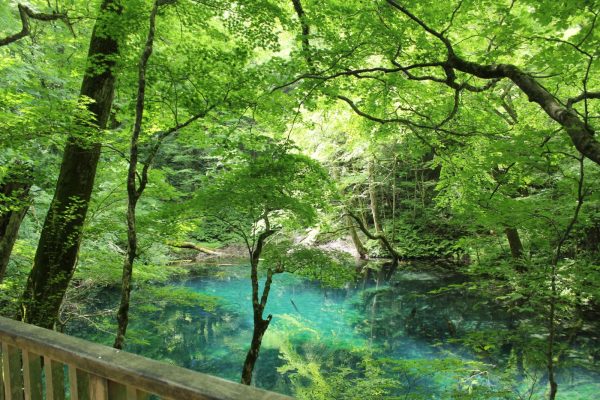
Day 7: Shirakami-Sanchi & Oga Peninsula
The destination of this morning is Aoike (Blue Pond) in Shirakami-Sanchi, the World Heritage mountains between Akita and Aomori. Of course you’ll enjoy driving itself through the dynamic mountains of Shirakami, but the Aoike Pond and the surrounding nature are breathtaking. People say it’s like someone poured blue ink into the pond. Thanks to the sunshine, around noon is the best time to visit there.
Afternoon will drive for Oga peninsula. Oga is known for Namahage demons. During a winter festival, the demons visit each family to threaten children into listening to their parents. That peninsula with the unique culture has a beautiful and interesting sunset viewing site, Godzilla Rock. There is a wave-cut rock that looks like Godzilla on Shiosesaki Viewpoint. When the sun comes down, it looks as if the Godzilla were shooting a fire.
Accommodation in Oga or Akita City
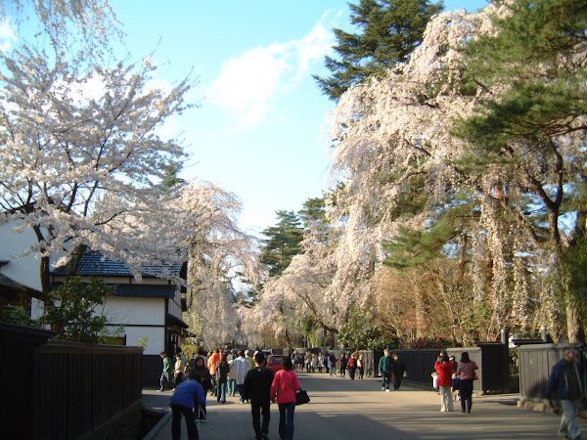
Day 8: Kakunodate & Lake Tazawa
One day trip to Kakunodate, samurai village, 1 hour away from Akita City. People visit Kakunodate, one of not a lot of old samurai districts that remains today, to see cherry blossoms in spring or autumn leaves. There remain houses of different families with each feature and story. You can go around this village with a local English-speaking guide or a guiding rickshaw.
Afternoon will visit Lake Tazawa, the deepest lake in Japan. The contrast between the deep blue of the lake and the green of the surrounding mountains is the highlight of this lake. There is a tale about a girl who lived near Lake Tazawa and the statue of the girl on the lakeside is a great photo spot.
Accommodation in Akita
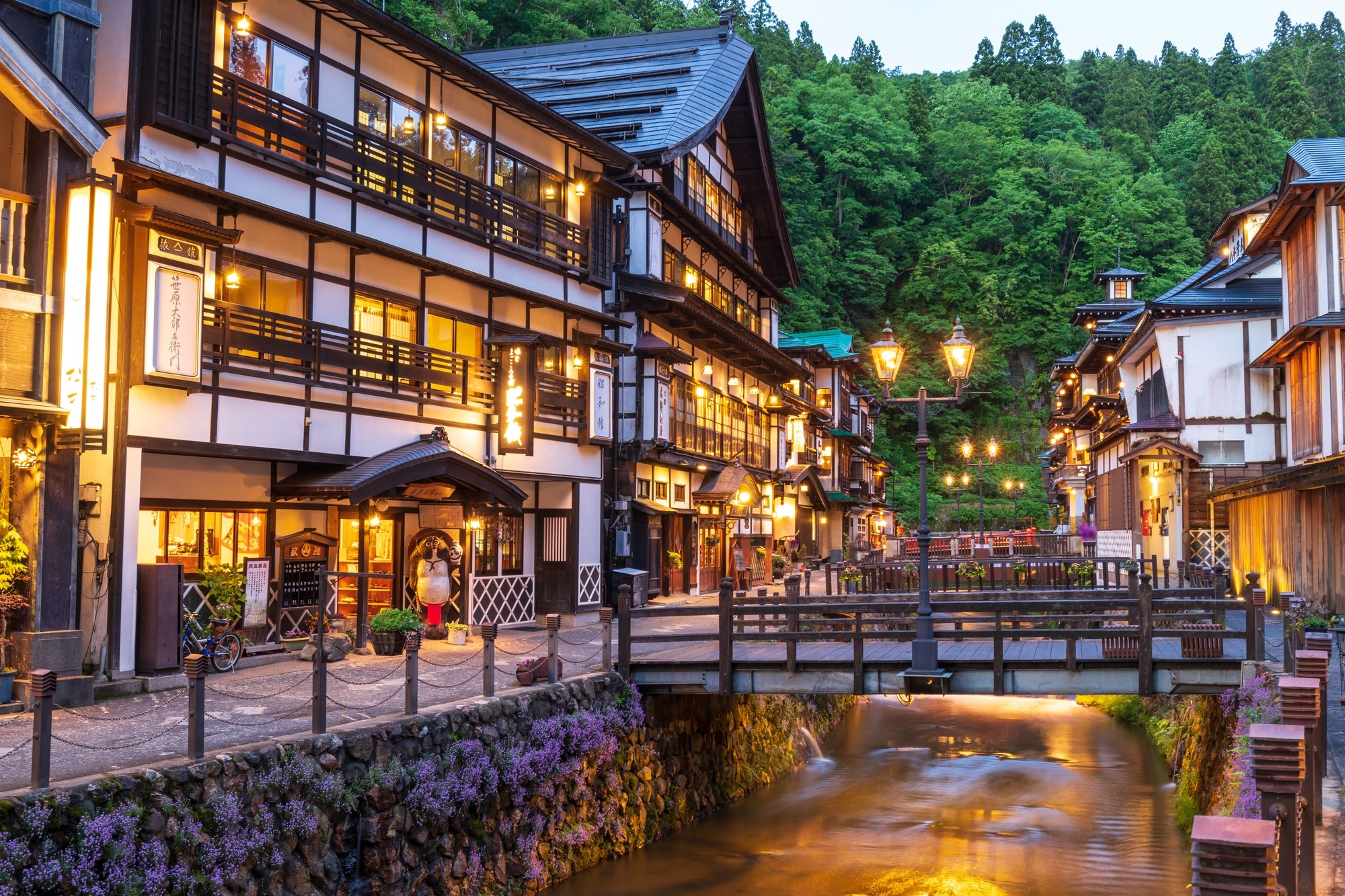
Day 9: Ginzan Onsen
Two hours driving Akita to Ginzan Onsen. Today, experience Japanese onsen culture. Ginzan Onsen town is the No.1 onsen resort in Tohoku with a traditional onsen townscape. In winter, many people visit to see the nostalgic town with beautiful snow, but of course you can also enjoy the onsen culture in other seasons. Ginzan is translated to a silver mine in English, and this onsen town is named after a silver mine that prospered in Edo period (500 years ago). After the mine was closed, a lot of people left this town but the onsen has remained for generations and now Ginzan onsen town is loved by onsen fans or tourists from different places.
Accommodation in Ginzan Onsen
Day 10: Mt. Zao & Zao Onsen
Less than a 2-hour drive to Yamagata. Mt. Zao is one of the most popular mountains in Tohoku because of the beautiful crater lake at the summit. You can trek from a lower station if you are a climber, but also roads are well paved for driving tourists. The emerald green lake changes its colour beautifully according to the angle of the sunlight.
The base area of Mt. Zao is loved by people as an onsen town. This old onsen discovered approximately 1,900 years ago is a high-sulfur hot spring and is called the “hot spring for beautiful and smooth skin”. Spend the last night of this tour soaking in the bath and healing your body from the fatigue you gained during this long trip.
Day 11: Drive back to Fukushima and transfer to Tokyo
1 hour drive to Fukushima and return the car. And then take a bullet train to Tokyo
Spectacular Nature - Tohoku Self Drive
Create your perfect Japan Holiday
Tell us your preferences and we’ll be in touch with the details
Sample Tour Map
After more Japan Tours?
Japan Holidays offers a wide range of Japan Tours – just ask!
Please call + 61 2 6674 4185
Enquire now for your Japan Holiday
Create your perfect Japan Holiday
Tell us your preferences and we’ll be in touch with the details
